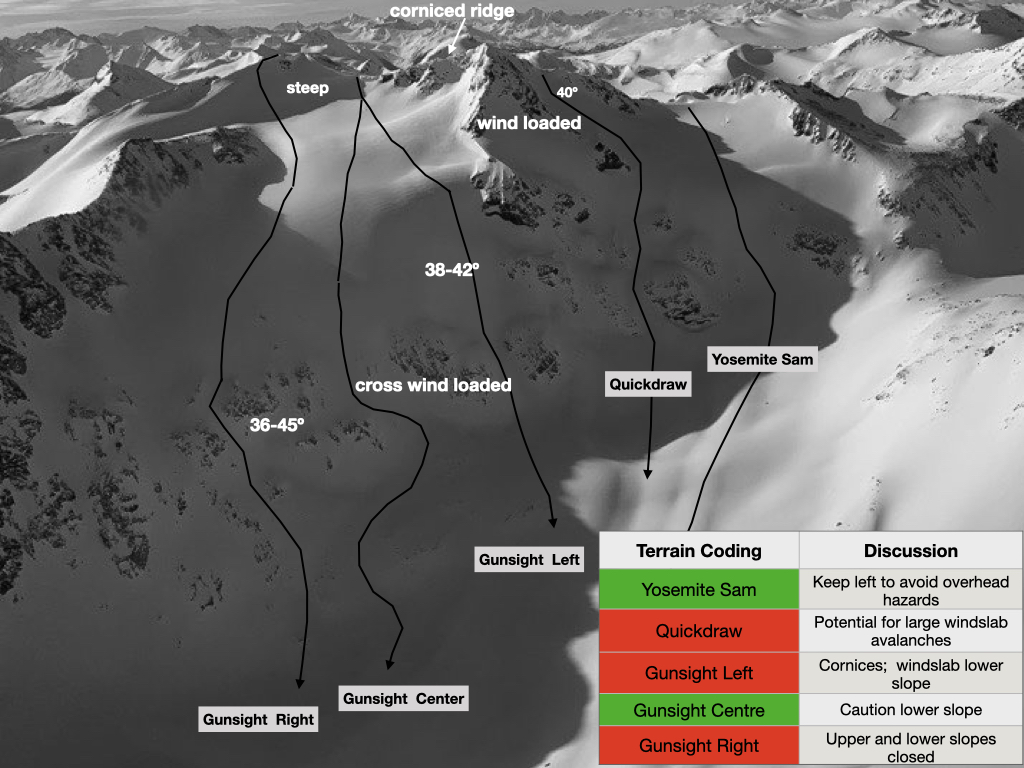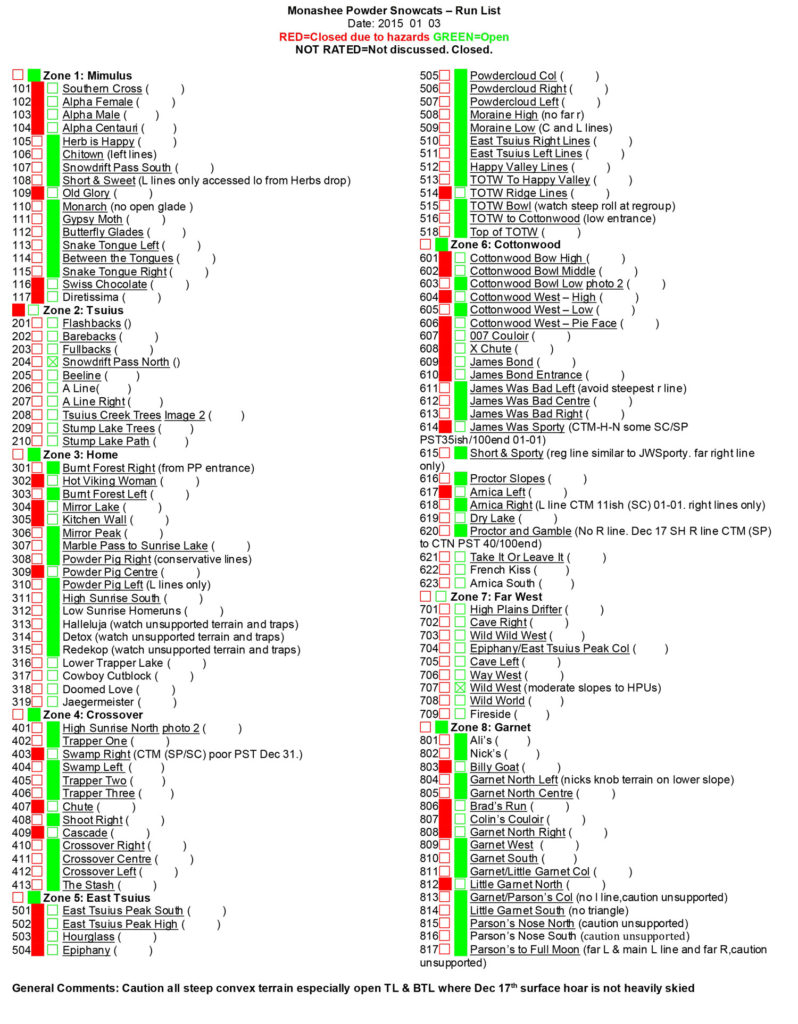Managing Avalanche Risk Part 5: The Ultimate Objective
In this fireside chat series on managing avalanche risk, Karl Klassen will pass along the wisdom acquired from his mentors and the knowledge learned from a distinguished career as avalanche forecaster and backcountry ski guide—to help you better understand avalanche hazard and how to manage the inherent risk you face.
In Part 4 of this series, I discussed how public avalanche forecasts can be used as the first step in your risk-management process. Now let’s talk about the next step, which involves a more nuanced look at combining hazard with terrain so you can establish objectives that fit your risk-tolerance profile.
Let’s start in April 1987, which is when, after nearly five years of preparation, practice, and training, including two winters of apprenticeship in New Zealand, I failed my ski guide exam. Even after trying again and passing the following spring, it took me years to stop blaming everyone and everything (except myself) for what happened. Eventually, thanks to a number of strong people who refused to support my continual whining, I was able to own the failure, and that allowed me to begin learning from it.
During that 1987 exam, instructors handed out assignments every afternoon. I’d then spend all evening after a long and tiring day, planning how to carry out the assigned task. What I didn’t recognize was that the task put before me had less to do with the destination and more to do with determining if the goal was appropriate in the first place, and what was required to get there and back safely. In short, I was far too focused on my perception of the objective and paying nowhere near enough attention to the risk-management steps in the journey.
I’m pretty certain most recreationists get trapped in the same way of thinking, even though there’s no examiner handing out assignments. If planning your next outing begins with thinking about what you want to ski rather than thinking about if or where it’s appropriate to go in the first place, you’re behind the eight ball right from the start.
If planning your next outing begins with thinking about what you want to ski rather than thinking about if or where it’s appropriate to go in the first place, you’re behind the eight ball right from the start.
What I learned from my failure was that, after creating my avalanche forecast, the next priority was not to aim myself and my group at my objective no matter what, but to first decide where potential risks are unacceptable. That meant taking off the table all the terrain features, slopes, peaks, and even entire drainages or ranges where the risk was higher than my comfort level. Only then could I establish goals and objectives for the day. This doesn’t mean waiting for the green brick of low danger at all elevations before taking on bigger, more complex, or even more dangerous trips. What you’re willing to risk is entirely up to you, as long as you are making an informed decision.
This process of eliminating terrain or objectives before figuring out your goals isn’t intuitive. In fact, it’s the opposite of what goal-driven adventure junkies like us tend to do
This process of eliminating terrain or objectives before figuring out your goals isn’t intuitive. In fact, it’s the opposite of what goal-driven adventure junkies like us tend to do But for me, taking unacceptable terrain and objectives out of the equation right from the start allows me to focus more effectively on what’s reasonable, and it removes the distraction of having to constantly wonder about and circle back to things that are unreasonable. This makes my life so much simpler, less stressful, and safer.

In professional contexts, I literally create a list of what’s acceptable (code green) and unacceptable (code red) on a daily basis. As a first step, I might code entire zones red, which takes large chunks of terrain out of the equation. (This is similar to what I suggested in my last article.) Removing entire zones from consideration saves me time and energy in the planning process because it allows me to focus on the areas where risk is acceptable. Just because a zone is green doesn’t mean all the terrain in that zone is 100 percent safe, so I need a way to deal with this residual risk. Here’s where a more detailed and nuanced approach can better inform your decisions. Within green zones, I code each run either green or red, depending on whether the terrain on the run presents acceptable or unacceptable risk.
Other times, I may take a more generic approach. For example, on a map or photo or Google Earth image, I might identify large areas to avoid by shading them red. Then for the remaining terrain, I list the features that would make a given feature, run, or slope red or green. This might be fairly broad statements like “all slopes under 30 degrees with no overhead hazard green,” and/or “slopes over 30 degrees on north aspects in the alpine red.” And I may go into more detail, like coding specific terrain features, e.g., “large convex rolls at treeline are red” and “small, well-supported planar slopes at treeline are green.”

The end result is closed zones that eliminate high risk areas and a “run list” that helps me select appropriate terrain within zones that are not closed. How specific and detailed you get depends on how well documented the terrain is, how familiar you are with where you’re going, and how confident you are in the accuracy of the forecast you are using.
I include my team in the process, which, of course, leads to differences of opinion. When this happens, my approach is to recall advice from one of my mentors: If you need to talk about a run for more than two minutes, you should make it red and get more information so you can reconsider tomorrow.
To deal with irreconcilable differences, I give everyone veto power over any green rating—anyone on the decision-making team not comfortable with a green run can unilaterally apply their veto and make it red. A run that’s red on the run list is closed to everyone, no matter what they personally think.
Are vetoes always right? Nope. But better wrong and alive than wrong and… well, you know.
And, just like your avalanche forecast is just a theory, your run list is just a starting point. To me, a run listed as green in the office in the morning doesn’t mean I’ll ski it—it just means I can go there and consider it after I’ve field-validated my plan and made an on-site risk assessment.
The key to all of this is it’s more than just an exercise: Print out or write down your lists or maps or marked-up photos and take them with you. Refer to them as you travel and connect the dots between what you said you would or wouldn’t do in your plan with what you are looking at and thinking about doing in the mountains.
If you are new to the avalanche game, it’s probably better to use a more broad-brush approach like what I described in Part 4 of this series. However, with advanced training and as you gain experience and knowledge, it’s not unreasonable to use the run-list concept to nuance your trip and risk-management plans so you can rationally and dispassionately consider bigger, more complex objectives—even when the hazard may not be low across the board.
And, while it’s perfectly reasonable to make your desired goal Plan A, you should have at least a Plan B that you can quickly implement if your primary objective isn’t safe. Additional backup plans may be a good idea on more complex trips. And, regardless of how many backup plans I create, I always have these three ready to whip out and put in play:
- Plan X: A strategic retreat to safe terrain where you can have fun all day without being threatened by avalanches in any way.
- Plan Y: A hazard-free route from where you are to the nearest coffee shop or pub.
- Plan Z: A safe spot and the means to call for help if all else fails.
Our desires and goals are extremely powerful motivations—even after many decades of managing risk in the mountains I find myself dreaming of what I want rather than starting with considering what’s appropriate given the conditions, the people I’m with, and our collective tolerance for risk. I still often need to remind myself that the mountain or slope or run I want to ski has been around for millennia and isn’t going anywhere.
I still often need to remind myself that the mountain or slope or run I want to ski has been around for millennia and isn’t going anywhere.
So even if the conditions aren’t right today, as long as I’m patient and stick to the process, there will eventually come a day when it is appropriate. And, honestly, given where I’m at in my life, I’ve accepted that the day may never come for me to accomplish some of the dreams for which I’ve not been in the right place at the right time—but I’m alive and happy, which is the ultimate goal isn’t it?
As for that exam so long ago, fortunately, the examiner in our group stopped me before I or someone in my group got hurt or killed. Rudi: I’ve never said thanks, but I’m pretty sure you saved my life—if not on that particular day, then for sure on the many occasions since when remembering April 1987 pulled me back from the brink of making a horrible mistake.
Karl Klassen is an internationally certified mountain guide known for developing the avalanche curriculum with Avalanche Canada. He is also the public avalanche warning service manager at Avalanche Canada.


